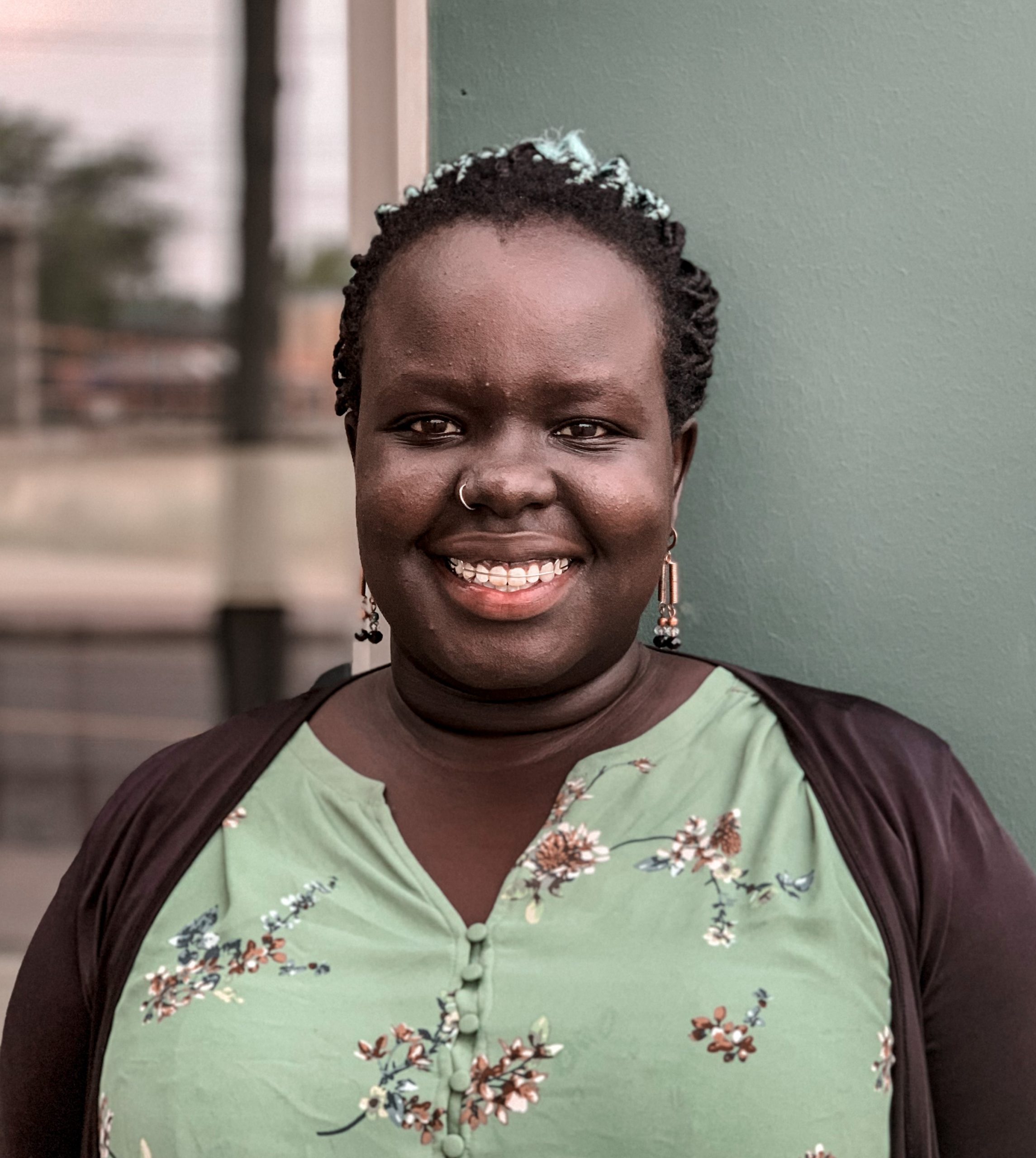
By
Michelle Lam, Stephanie Spence, Akech Mayuom, and Natasha Ofwono
September 2021
Print Version
What you need to know
When Phyllis Webstad arrived at St. Joseph’s Mission residential school in British Columbia, they took away her clothes, including her new orange shirt. It was never returned. Orange Shirt Day is a day to recognize the harms of residential school and affirm a commitment that everyone around us matters. In past years, people at Brandon University have written messages on orange shirts posted in hallways. After doing an analysis of the messages, the researchers found seven prominent themes. The most prominent theme spoke about building a better future, while other themes included recovering relationships, healing, equality, sacred identities, education, and justice. These seven themes are significant because they illustrate how people at Brandon University respond to prompts about reconciliation.
Why this research is important
September 30th was recently declared National Day for Truth and Reconciliation. This was in response to the 94 calls to action from the Truth and Reconciliation Commission, which called the federal government to collaborate with Indigenous peoples to establish a day to honour survivors, families, and communities, and commemorate the history and legacy of residential schools. It is also in response to the Indigenous children found on the grounds of residential schools. Although the holiday is new, by using previous orange shirts, we show that what happened was known before the formation of this new holiday.
How this research was conducted
We began with 119 messages, from 2017-2019, which were written in response to prompts such as “Every child matters to me because” or “What reconciliation means to me” or “What orange shirt day means to me.” While some of the messages were easily categorized, others could be listed in multiple categories or contained more than one message. To address this, we categorized those that fit neatly within the emerging themes and then discussed those that were conflicting as a group. After our initial sort, we were left with 13 categories, several of which were easily transferrable by abstracting out a level. For example, our initial sorting process had a category for “allyship” and another for “reconciliation.” Comparing the contents of both, we found they could be merged under the theme of “recovering relationships.”
What the researchers found
Forty-one of the messages (the most prominent theme) spoke about building a better future. This theme involved recognizing that children are our future, hope for change, children representing possibilities, potential, leadership, forgiveness, and progress. Justice and education were both linked to this theme.
The second most common theme was recovering relationships. This theme encompassed items relating to allyship, decolonization, and (re)conciliation. Messages focused on giving up power, listening, ownership and responsibility, developing trust, anti-racism, love, and sharing the land.
The third theme spoke about healing. Many of these contained the word ‘healing’ itself, while others linked healing to understanding, appreciating, caring, loving, honouring, remembering, forgiveness, peace, respect, and coming together.
Equality was another common theme, often containing the phrase, “every child matters,” or “we all matter.”
The identity theme illustrated strength, pride, and messages about worth, particularly the sacredness of children. Messages included words such as ‘precious,’ ‘unique,’ ‘awesome,’ ‘sacred,’ ‘special,’ ‘innocent,’ ‘beautiful,’ ‘angels,’ and ‘gift.’
Another theme communicated the importance of education. This involved spreading awareness, knowledge, and recognition of the past. Some messages spoke about educating younger generations about how it once was, and others spoke about self-education and the need for safety in education. Learning through the land was also mentioned.
Finally, there was a strong theme of justice. These messages focused on messages such as “all children deserve love and protection” and “nobody deserves to lose their history.” The theme included messages about innocence, compensation and often contained the phrase “no child should…(feel hated, be neglected, feel less than, be harmed).
How this research can be used
When we think about the National Day for Truth and Reconciliation and every other day, the themes of building a better future, recovering relationships, healing, equality, sacred identities, education, and justice are things to work towards in our own lives, and themes that can govern our interactions with one another.
Acknowledgements
Thank you to Chris Lagimodiere and Michelle Bessette at the Indigenous Peoples' Centre for collecting and sharing the orange shirt messages from previous years.
About the Researchers
Keywords
- content analysis
- Every Child Matters
- Orange Shirt Day
- reconciliation
Editor: Christiane Ramsey
Read more BU Research
Research at Brandon University follows comprehensive policies designed to safeguard ethics, to ensure academic integrity, to protect human and animal welfare and to prevent conflicts of interest.




